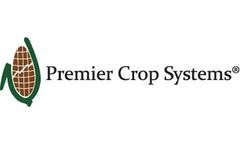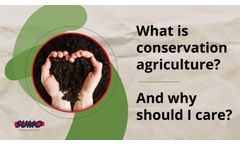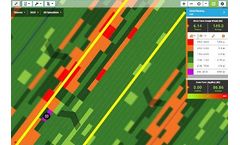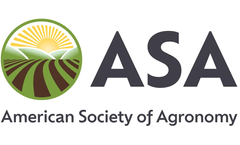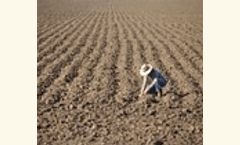Tillage Operation Articles & Analysis
32 articles found
Everyone knows the environmental impact carbon emissions have on the environment, speeding up climate change and causing extreme weather conditions. However, fewer people are aware of the importance of using water conservatively, as resources are quickly diminishing across the world, which not only exacerbates climate change, but could also put human and animal life at ...
In my area of Iowa, primarily in Mitchell County, the adoption of strip-till has been huge. There were three or four people that started in the early 2000s, along with my dad, that were pretty vocal about what they were seeing and what kind of benefits they were getting from reducing tillage and going to a strip-till pass. I would love everybody to switch to strip-till and then to no-till down ...
With a lot of noise currently surrounding sustainability in British agriculture, there are many conflicting viewpoints on the best approach farmers should take to care for their environment. In this blog, we discuss conservation agriculture, and how by looking after your soil, you’re looking after your bottom line. We explore how it can benefit farmers to increase yields and lower crop ...
It is no secret that ground conditions and tillage practices present different challenges for growers during planting season. Those who practice no-till with cover crops can have the most difficult environments for planters when it comes to seed placement - specifically seed depth. Time and again our TechTrials reveal that no matter the farming practices, or ground conditions seed depth makes or ...
Like any business, farmers must manage their farms with one foot in the present and the other in the future. It’s not enough to focus just on yields. We must also consider the impact those yields have on our fields. To ensure sustainable crop production, the implementation of a method like conservation tillage is vital. Conservation tillage is a tilling process that leaves at least ...
ByGrowers
While the optimum depth for corn is generally universal no matter where you are located, your ground and farming practices can make a big difference in what you need to do to achieve that depth – especially tillage practices. So we set out to answer – How does SureForce perform compared to springs in a no till environment and a conventional tillage ...
Agriculture degrades over 24 million acres of fertile soil every year, raising concerns about meeting the rising global demand for food. But a simple farming practice born from the 1930's Dust Bowl could provide a solution, according to new Stanford research. The study, published Dec. 6 in Environmental Research Letters, shows that Midwest farmers who reduced how much they overturned the soil -- ...
A three‐year study was conducted on a corn field in Central Illinois, USA, to understand the fate and effects of an insecticidal formulation containing the active ingredients phostebupirim and cyfluthrin. The objectives of the current study were to 1) determine the best tillage practice (conventional versus conservation tillage) in terms of grain yields and potential environmental risk, 2) ...
A three-season research study was conducted at Embu Agricultural Research Station farm to determine the effect of glyphosate-based herbicides on weeds management and maize ( Zea mays L. ) performance under zero-tillage conservation agriculture practice. Glyphosate herbicide sprays were prepared from Roundup Turbo product at the rate of 2.5 L ha –1 and Roundup Weathermax at 1.5, 2.5 and 3.0 L ...
Land application of animal manures such as poultry litter is a common practice, especially in states with surplus manure. Past studies have shown that animal manure may contain estrogens, which are classified as endocrine-disrupting chemicals and may pose a threat to aquatic and wildlife species. We evaluated the concentrations of estrogens in surface runoff from experimental plots (5 × 12 ...
Conservation tillage, besides being more economical, prevents soil erosion and has other beneficial effects on our environment, but few studies have been conducted on differential responses of different crops to conservation tillage. The main objective of this study was to examine the interaction of tillage with crop species. Rainfed field experiments in a strip-plot design with four replicates ...
Received for publication December 19, 2008. Cereal production that now sustains a world population of more than 6.5 billion has tripled during the past 40 yr, concurrent with an increase from 12 to 104 Tg yr–1 of synthetic N applied largely in ammoniacal fertilizers. These fertilizers have been managed as a cost-effective form of insurance against low yields, without regard to the inherent effect ...
The use of crop rotation systems involving winter-annual grazing can help peanut (Arachis hypogaea L.) producers increase profitability, although winter-annual grazing could result in excessive soil compaction, which can severely limit yields. We conducted a 3-yr field study on a Dothan loamy sand in southeastern Alabama to develop a conservation tillage system for integrating peanut with ...
Broomrape (Orobanche crenata Forsk.) causes considerable losses in faba-bean (Vicia faba L.) production in the Mediterranean region. The application of an ultra-low glyphosate rate at an early broomrape parasitic phase, i.e., tubercle development, is the most common control system. This study sought to determine the effect of tillage system and glyphosate application on broomrape infestation, ...
Adoption of reduced tillage practices have been driven by the need to enhance soil quality, minimize field labor time, and scale up farm size. However, concerns about increased reliance on herbicides and demand for organically grown foods call for adoption of production practices that can reduce both tillage and herbicide use. This research study assessed the influence of planting and termination ...
As economic conditions deteriorated, cotton (Gossypium hirsutum L.) producers have looked to improve profit margins by reducing inputs while maintaining yields. Pairing the yield benefits from early planting with the input reductions from conservation tillage might help accomplish those goals. The objective was to determine how growth, lint yield, and fiber quality were impacted by planting ...
Nitrogen mineralization occurring near the soil surface of agroecosystems determines the quantity of plant-available N, and soil enzymes produced by microorganisms play significant roles in the N mineralization process. Tillage systems may influence soil microbial communities and N mineralization enzymes through alterations in total soil C and N. Soil aggregates of different sizes provide diverse ...
Escalating fossil fuel cost and concern over global climate change have accelerated interest in cellulosic feedstocks, such as corn (Zea mays L.) cobs, for liquid fuel production. Little information is available about this plant organ. We compiled and summarized available cob data from several recent field studies in the Central Great Plains. Data were collected from two locations in Colorado and ...
Both tillage and fertilizer management influence soil organic C (SOC) storage, but their interactive effects remain to be determined for various soil and climatic conditions. We evaluated the long-term effects of tillage (no-till, NT, and moldboard plowing, MP), and N and P fertilization on SOC stocks and concentrations in profiles of a clay loam soil (clayey, mixed, mesic Typic Humaquept). Corn ...
The California Air Resources Board uses fixed PM10 emission values for various tillage operations to monitor and design attainment strategies. However, fixed emission values do not reflect emissions produced by a single implement operating under different soil conditions. ...

